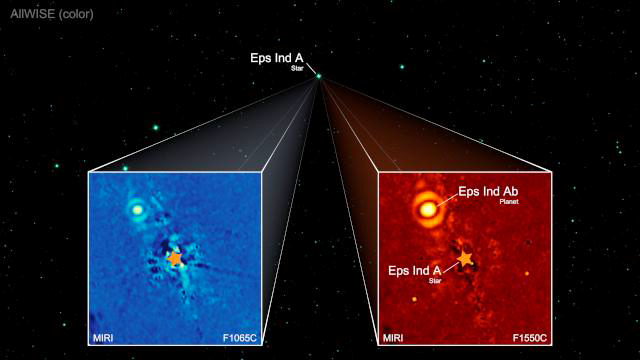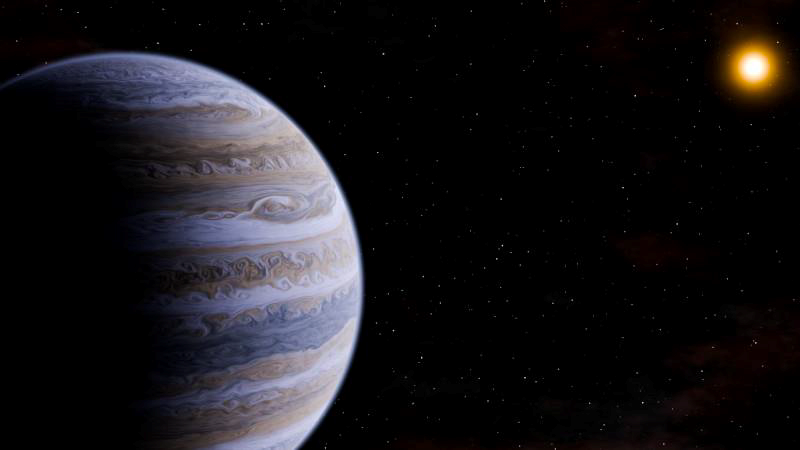Amazing Discovery Of Super-Jupiter Planet Outside Solar System


A multinational team of astronomers has made a groundbreaking discovery: they have found a gigantic planet orbiting a nearby star that resembles our Sun. Dr. Prashant Pathak is an assistant professor at the Department of Space, Planetary & Astronomical Sciences & Engineering (SPASE), IIT Kanpur. This planet, called Epsilon Indi Ab or just Eps Ind Ab for short, is a super-Jupiter because of its mass, which is at least six times that of Jupiter and makes it much larger than any other planet in our solar system. The first mature exoplanet—a planet outside of our solar system—to be found by direct imaging technology is EpsInd Ab. The world’s top multidisciplinary science journal, Nature, has published information about the finding and the research that led to it.
An international team of scientists has directly observed a new exoplanet circling the K5V-type star Epsilon Indi A (also known as HD 209100 or HIP 108870) using the Mid-InfraRed Instrument (MIRI) on board the James Webb Space Telescope (JWST). An important turning point in space exploration has been reached with the direct imaging of a nearby adult exoplanet. Direct imaging enables astronomers to see the exoplanet up close, in contrast to indirect approaches that determine a planet’s existence through its gravitational pull or the fading of brightness as it passes in front of its host star. This innovation demonstrates the potential of the JWST by combining imaging techniques, infrared capabilities, and high sensitivity. Such developments extend our effort to solve the secrets of far-off worlds and open the door for future discoveries.
The planet that was just found is 12 light-years away from Earth. The planet’s temperature is just about -1°C (30°F), which is extremely cold. Its orbit is likewise enormous, revolving around its star at a distance 28 times bigger than that of our Sun and Earth.
Because the massive planet Eps Ind Ab has an orbital period of around 200 years and the data from short-term observations is insufficient to adequately identify the planet’s parameters, previous attempts to analyze the planet using radial velocity measurements have not been effective. As a result, the group chose to use direct imaging.
The team of researchers from renowned institutions around the world included Elisabeth Matthews, Max Planck Institute for Astronomy, Germany, Aarynn Carter, Space Telescope Science Institute, USA, Prashant Pathak, Department of SPASE, Indian Institute of Technology Kanpur, India, Caroline Morley, Department of Astronomy, USA, Mark Phillips, Institute for Astronomy, University of Edinburgh, UK, Sai Krishanth Pulikesi Mannan, Steward Observatory and Department of Astronomy, USA, Fabo Feng, Shanghai Jiao Tong University, People’s Republic Of China, Markus Bonse, ETH Zurich, Institute for Particle Physics & Astrophysics, Switzerland / Max Planck Institute for Intelligent Systems, Germany, Leindert Boogaard, Max Planck Institute for Astronomy, Germany, Jennifer Burt, Jet Propulsion Laboratory, California Institute of Technology, USA, Ian Crossfield, Department of Physics and Astronomy, University of Kansas, USA, Ewan Douglas, Steward Observatory and Department of Astronomy, USA, Thomas Henning, Max Planck Institute for Astronomy, Germany, Justin Hom, Steward Observatory and Department of Astronomy, USA, Markus Kasper, European Southern Observatory, Garching bei München, Germany, Chia-Lin Ko, Steward Observatory and Department of Astronomy, USA, Anne-Marie Lagrange, LESIA, Observatoire de Paris, Université PSL, CNRS, France / Univ. Grenoble Alpes, CNRS-INSU, Institut de Planétologie et d’Astrophysique de Grenoble (IPAG), France, Dominique Petit dit de la Roche, Department of Astronomy, University of Geneva, Switzerland, and Florian Philipot, LESIA, Observatoire de Paris, Université PSL, CNRS, France.
For more information, please visit www.iitk.ac.in
Priyanka Dutta
